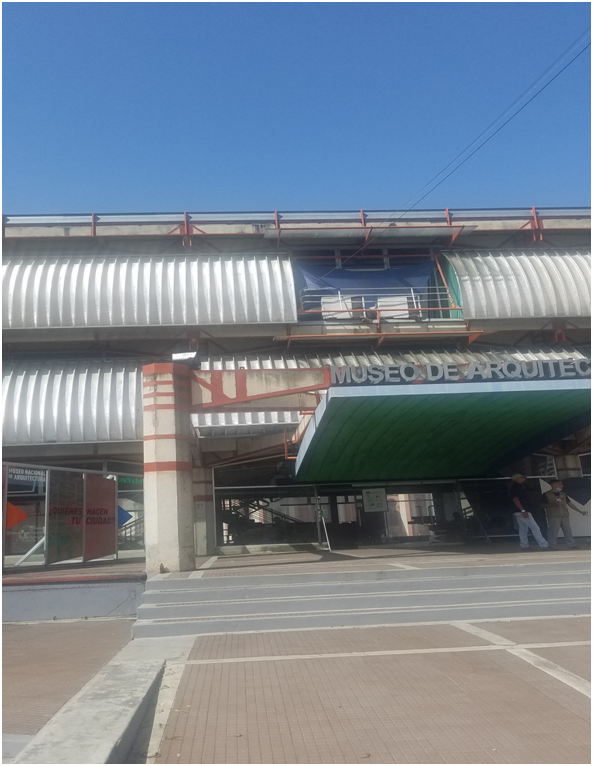
In 2006, the idea of building a museum dedicated to architecture was started, whose aim was not only the passive exhibition of what happens in the enchanting world of the construction of all kinds of architectural structures, but also as a space to learn about and reflect on the major issues that concern architecture, the city and industrial design. The MUSARQ, short for "Museum of Architecture", focuses its attention on contemporary architectural events, including research, reflection and cultural dissemination. The institution aims to study, research and disseminate five structural thematic axes: history, the city, the environment, tectonics and industrial design.
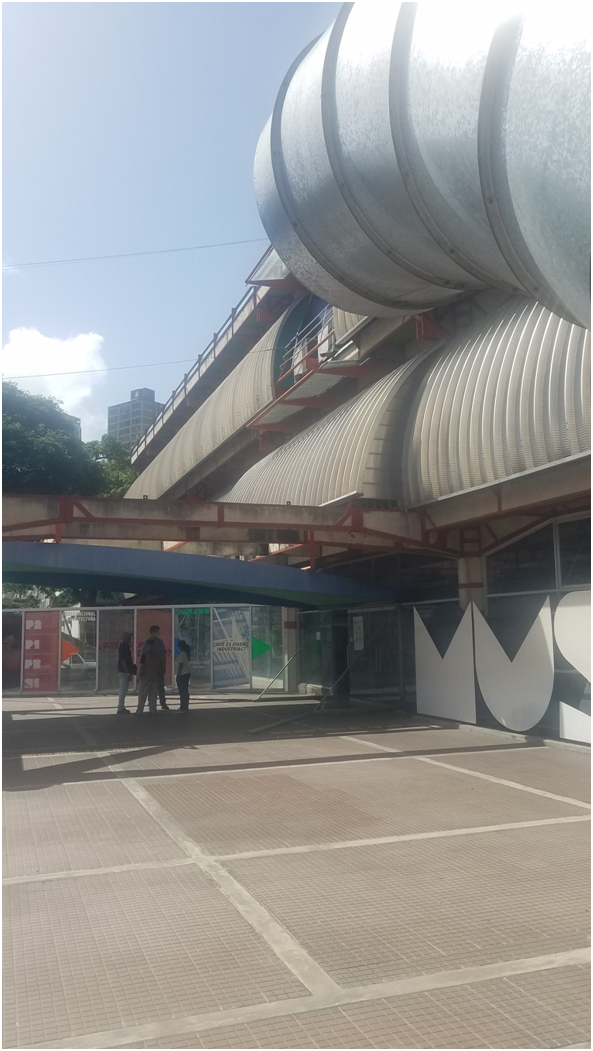
The Museum was built on Avenida Bolívar in Caracas, on an area of 1500 square meters and occupies a space of 4800 square meters. It has a reinforced concrete structure made with national technology and its designer is the architect Juan Pedro Posani, Villanueva's beloved student, accompanied in the structural design by the engineers José A. Peña and Patricia Peraza, who presented the project in 2006. On the 15th In October 2009, the construction began with the movement of earth, the reinforced concrete structure of the five floors was started at the end of November of the same year and in just over three months it is finished thanks to a prefabricated system; the work is paralyzed for different reasons and is resumed later, until it was inaugurated in October 2012.
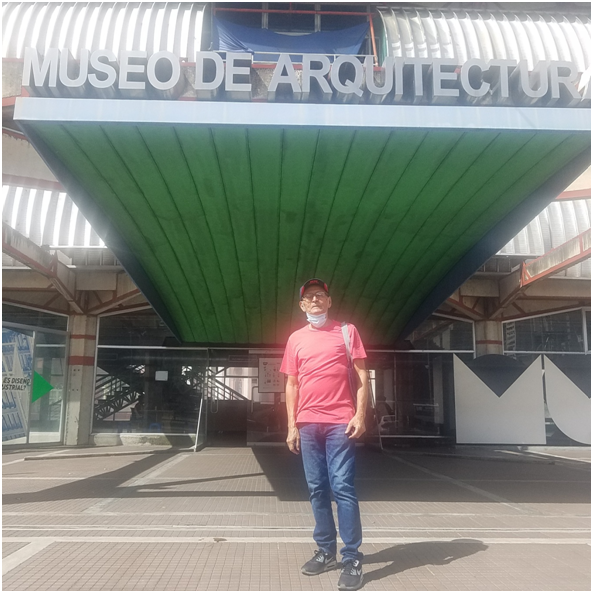
(Mi persona en la entrada al Museo. Foto propiedad del autor, julio 2021)
The structure has 5 levels of 4 meters high each level, which includes three floors of exhibition, work and conservation areas, an auditorium for 150 people, a documentation center; it also has two basements, with parking.
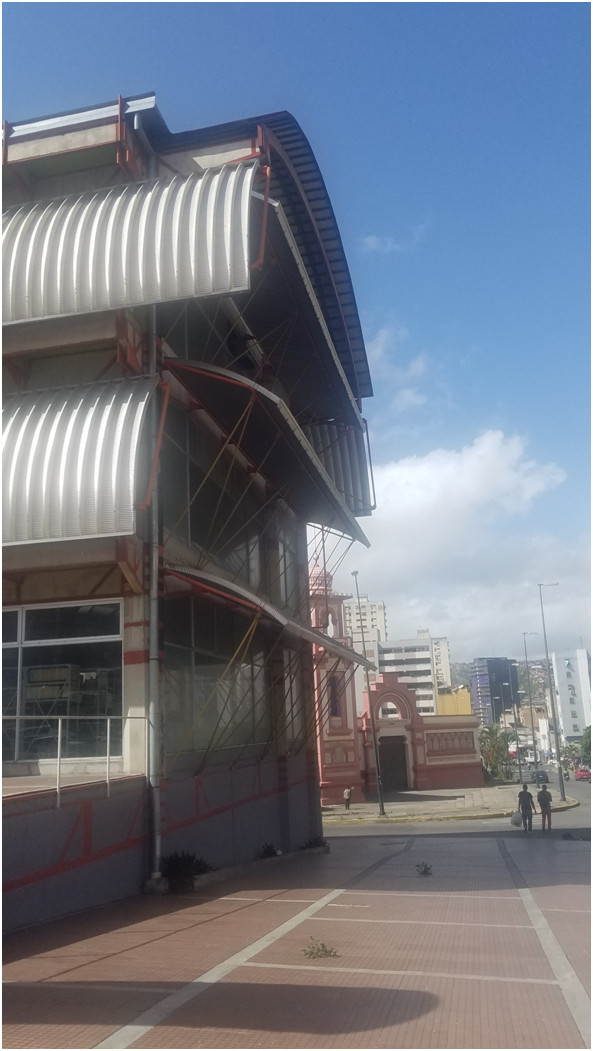
(La estructura fue construida con techos curvos de aluminio, Foto personal, julio 2021)
The building is packed with a metal membrane just one millimeter thick. Self-supporting aluminum coils were used, a metal that is easy to bend and corrugate, either in curves for ceilings or smooth for walls or enclosures, and which had been used for the rapid construction of sheds, schools and factories.
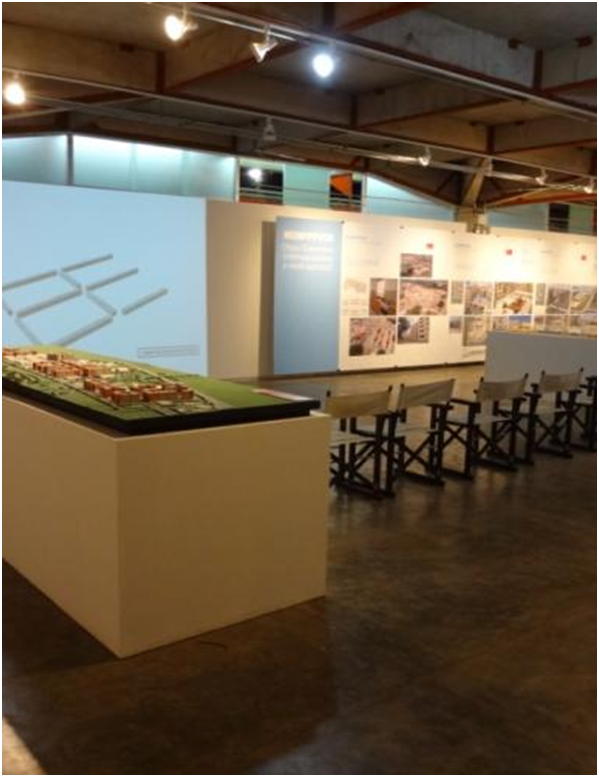
As part of its permanent collections it has artistic objects, and cared for as such, like: plans, models, photographs and illustrations that explain the process of building construction and its location. The fundamental objective of the Musarq is to document, disseminate and make its visitors aware of the values, characteristics and problems of architecture, industrial design and urban structures in general. To take these values beyond the walls of the Museum, it is expected to make traveling exhibitions, as well as edit works, within the reach, both nationally and internationally, of the public on the specific characteristics of architecture in Venezuela, in each of its buildings. historical stages.
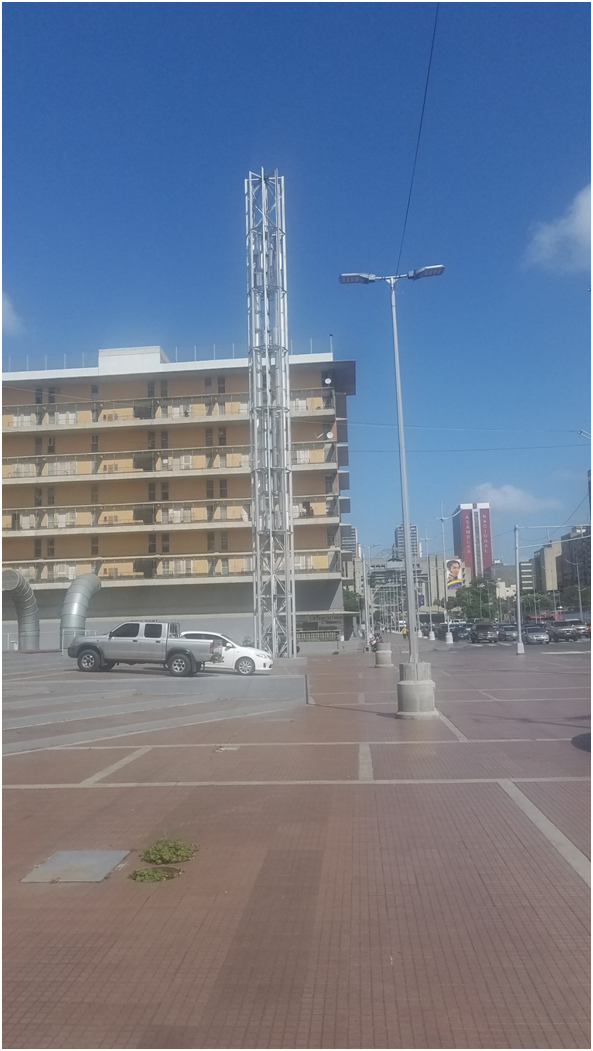
In 2015, after being recovered and restored, the sculptural work by Alejandro Otero (1921-1990) “Vertical Vibrante Oro y Plata” was installed in front of the MUSARQ. The work has a height of 24 meters and a diameter of 2 meters; recently a gigantic polished stone brought from the Amazon was installed outside the museum, accompanying Otero's work.
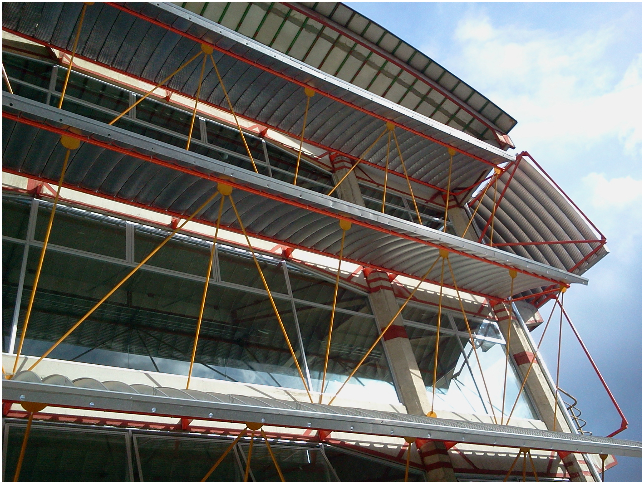
In my short view of the museum, I could only take photos of it from the outside, since it had been taken by a State body to serve as the operational headquarters of the National Electoral Council, with a view to the December elections, which is why is closed to the public "until further notice." For this reason I have had to complement my photos with those found on the internet.
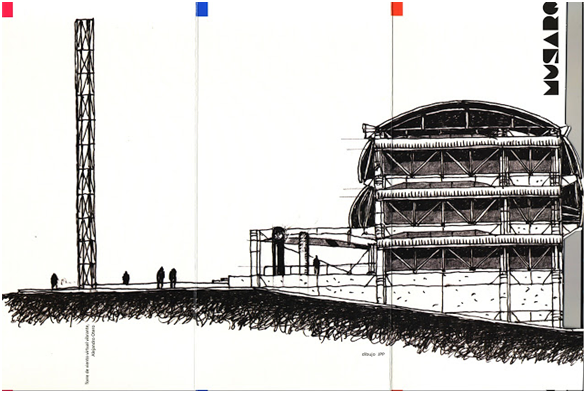
Consulted bibliography::
I.- Villargel, Alexander (2018): El MUSARQ (Museo Nacional de Arquitectura).
II.- Techos curvos novedoso práctico y rápido
III.- Proyectos Caracas, Museo de Arquitectura
https://arquetipos21.blogspot.com/2018/07/el-musarq-museo-nacional-de-arquitectura.html?spref=pi: https://steemkr.com/spanish/@elabuelo/techos-curvos-novedoso-practico-y-rapido: http://musarq.blogspot.com/2011/10/inauguramos-este-blog-el-del-miercoles.html
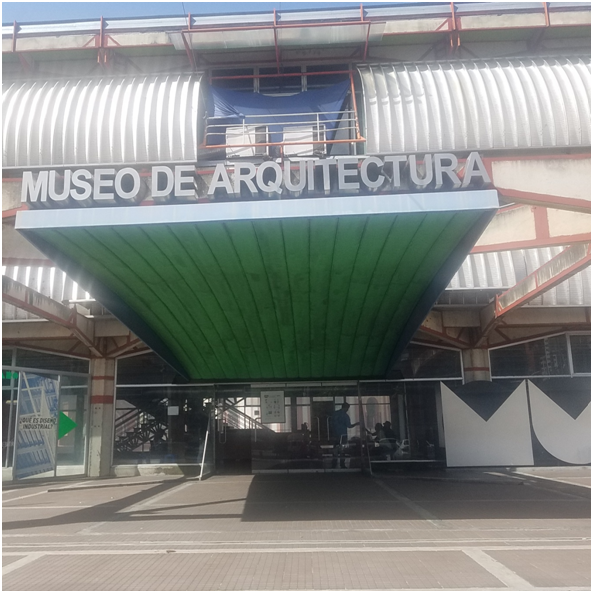
En el año 2006, se comenzó con la idea de construir un museo dedicado a la arquitectura, cuyo fin no sólo era la exposición pasiva de lo que pasa en el encantador mundo de la construcción de todo tipo de estructuras arquitectónicas, sino también como un espacio para conocer y reflexionar sobre los grandes temas que conciernen a la arquitectura, la ciudad y el diseño industrial. El MUSARQ, siglas de “Museo de Arquitectura”, concentra su atención en los hechos arquitectónicos contemporáneos, incluidos la investigación, la reflexión y la divulgación cultural. La institución tiene como objetivo estudiar, investigar y difundir cinco ejes temáticos estructurales: la historia, la ciudad, el ambiente, la tectónica y el diseño industrial.
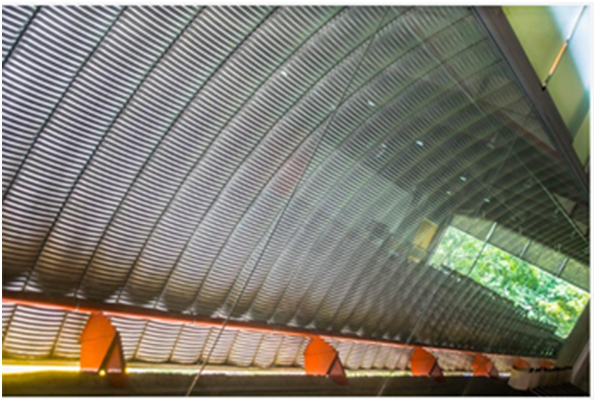
El Museo fue construido en la Avenida Bolívar de Caracas, sobre un área de 1500 metros cuadrados y ocupa un espacio de 4.800 metros cuadrados. Posee una estructura de hormigón armado hecho con tecnología nacional y su diseñador es el arquitecto Juan Pedro Posani, dilecto alumno de Villanueva, acompañado en el diseño estructural por los ingenieros José A. Peña y Patricia Peraza, quienes presentaron el proyecto en 2006. El 15 de octubre del 2009 arrancó la construcción con el movimiento de tierra, la estructura en hormigón armado de los cinco pisos se comenzó a finales de noviembre del mismo año y en poco más de tres meses se termina gracias a un sistema prefabricado; la obra se paraliza por distintas razones y se retoma posteriormente, hasta inaugurarla en octubre de 2012.
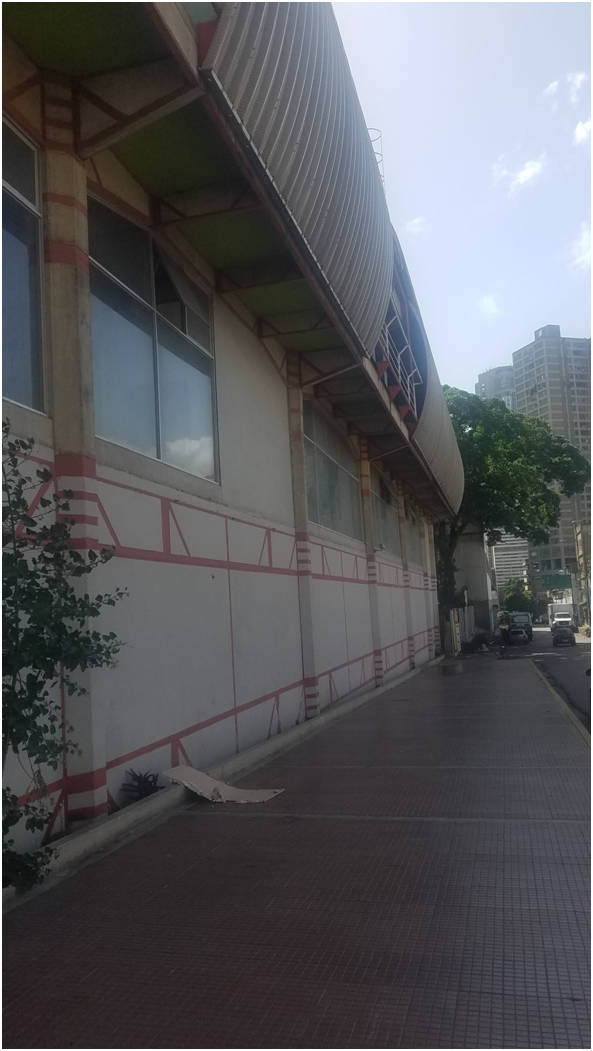
La estructura tiene 5 niveles de 4 metros de altura cada nivel, que comprende tres pisos de áreas expositivas, de trabajo y conservación, un auditorio para 150 personas, un centro de documentación; además cuenta con dos sótanos, con estacionamiento.
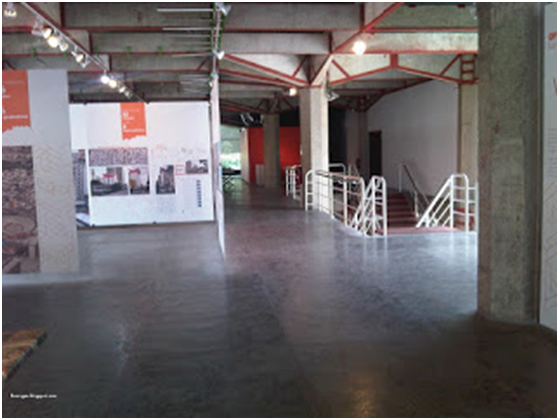
El edificio está empaquetado con una membrana de metal de apenas un milímetro de espesor. Se utilizaron bobinas de aluminio auto soportante, metal que es fácil de doblar y corrugar, bien sea en curvas para los techos o liso para paredes o cerramientos, y que venía siendo utilizado para la construcción rápida de galpones, escuelas y fábricas.
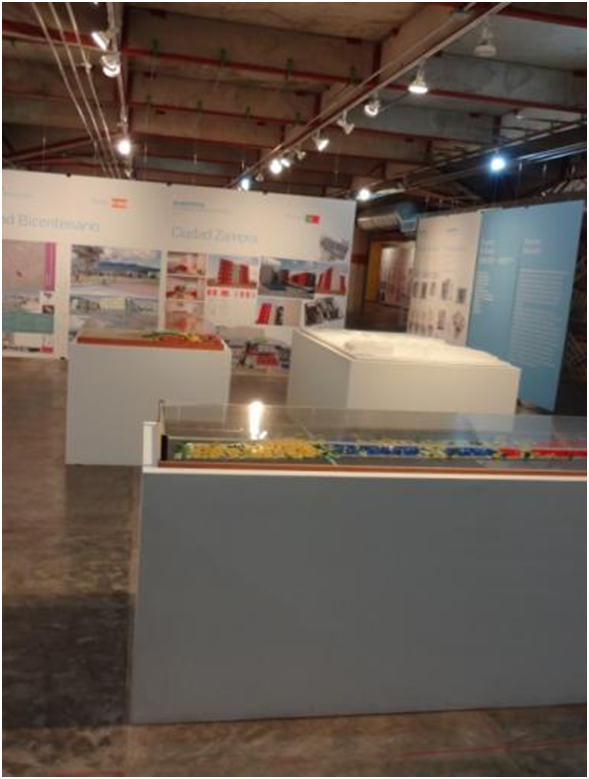
Como parte de sus colecciones permanentes tiene objetos artísticos, y cuidados como tales, a: planos, maquetas, fotografías e ilustraciones que explican el proceso de construcción de edificios y su ubicación. El objetivo fundamental del Musarq es el de documentar, difundir y concientizar a sus visitantes de los valores, características y problemas de la arquitectura, el diseño industrial y las estructuras urbanas en general. Para llevar estos valores más allá de las paredes del Museo, se espera hacer exposiciones itinerantes, así como editar obras, al alcance, tanto a nivel nacional como internacional, del público sobre las características especificas de la arquitectura en Venezuela, en cada una de sus etapas históricas.
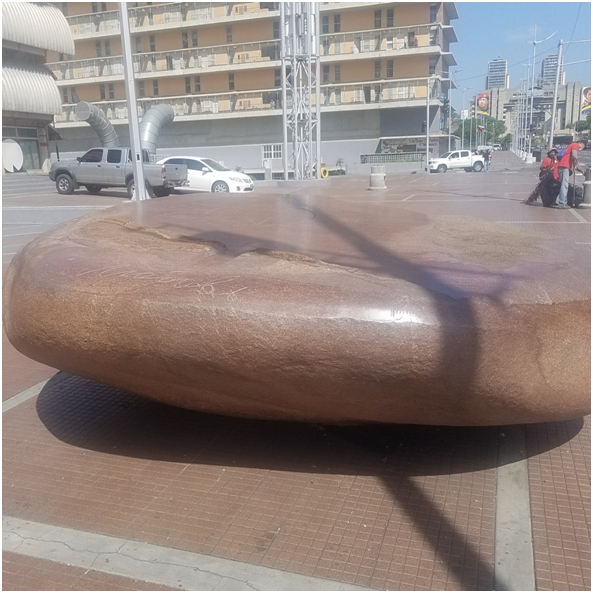
En el año 2015, fue instalada, después de haber sido recuperada y restaurada, frente al MUSARQ la obra escultórica de Alejandro Otero (1921-1990) “Vertical Vibrante Oro y Plata”, la obra tiene una altura de 24 metros y un diámetro de 2 metros; recientemente se instaló una gigantesca piedra pulida traída desde el Amazona, en las afueras del museo, acompañando a la obra de Otero.
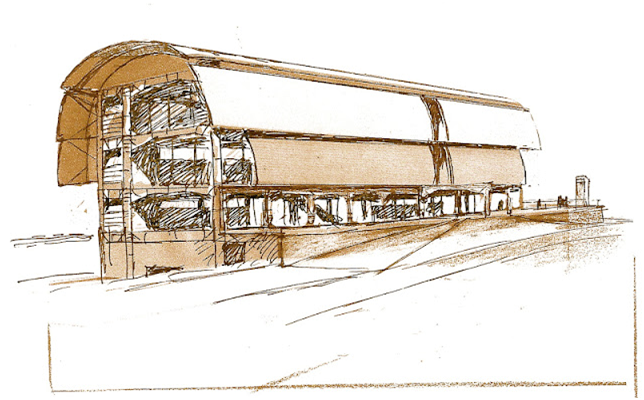
En mi corta vista al museo solo pude tomar fotos del mismo desde afuera, ya que había sido tomado por un organismo del Estado para servir de sede operativa de Consejo Nacional Electoral, con vistas a las elecciones del mes de Diciembre, razón por la cual se encuentra cerrado al público “hasta nuevo aviso”. Por ello he tenido que complementar mis fotos con las que se encuentran en internet.
Bibliografía consultada:
I.- Villargel, Alexander (2018): El MUSARQ (Museo Nacional de Arquitectura).
II.- Techos curvos novedoso práctico y rápido
III.- Proyectos Caracas, Museo de Arquitectura
https://arquetipos21.blogspot.com/2018/07/el-musarq-museo-nacional-de-arquitectura.html?spref=pi: https://steemkr.com/spanish/@elabuelo/techos-curvos-novedoso-practico-y-rapido: http://musarq.blogspot.com/2011/10/inauguramos-este-blog-el-del-miercoles.html
Congratulations, your post has been added to Pinmapple! 🎉🥳🍍
Did you know you have your own profile map?
And every post has their own map too!
Want to have your post on the map too?
Thanks a lot friends from pinmapple. Have a good day and a profitable and restful weekend.
!discovery 25
Hello Juecoree, apparently you sent me a message 9 hours ago, but it did not arrive. I hope it will arrive sooner or later. Have a good day and a profitable and restful weekend.
This post was shared and voted inside the discord by the curators team of discovery-it
Join our community! hive-193212
Discovery-it is also a Witness, vote for us here
Delegate to us for passive income. Check our 80% fee-back Program
Thanks friends of discovery-it, grateful for having voted and shared my post within discord. I wish you a restful weekend
I can remember there is a lot of good architectural models in that Museum! Very nice you went there. Greetings @besamu ✌️ Happy weekend!
Hello Ricardo, unfortunately I did not have access to the interior of the museum, I was curious to see the models and other architectural objects that are exhibited as museum pieces. It will be another time, Happy weekend to you too.
The roof is probably the most complex structure of any building that I have seen. very interesting and time consuming.
Hi barski, thank you for your comment. It is indeed a complex roof, I don't know if it is unique, but I have not seen another like it anywhere else. I hope you have a week of success, health and prosperity
Architecture Brew #35. Congratulations!Well done @besamu! We're happy to inform you that this publication was specially curated and awarded RUNNER-UP in
Subscribe to Architecture+Design, an OCD incubated community on the Hive blockchain.
Thank you very much for having curated and awarded my publication as Runner-up in Architecture Brew #35.